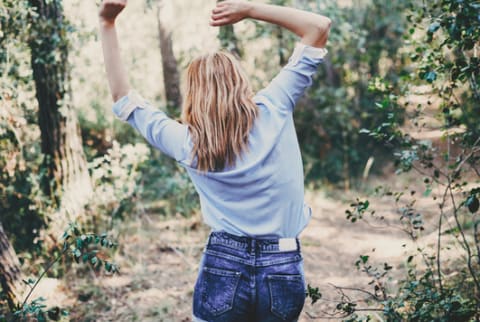Advertisement
The Definitive Eco-Friendly Laundry Guide


Over the past few years, consumer demands have inspired more natural, eco-friendly food and beauty offerings. Home care products, however, seem to be lagging a bit further behind, and many people still associate names like Febreze and Cascade with a clean home.
While old-school cleaning products may be effective, many of them contain hazardous ingredients or contaminants. This risk is especially pronounced in the laundry room, which can be filled with chemicals that irritate eyes, skin, and airways and offer little in the way of ingredient transparency.
According to Samara Geller, a database and research analyst at the Environmental Working Group, 1,4-Dioxane is one of the most dangerous of these compounds. "You won't find the probable carcinogen 1,4-Dioxane if you're scanning the label, but it may be lurking as an impurity," she tells mindbodygreen. "It's unintentionally formed during the manufacturing of ethoxylated surfactants, such as those found in laundry detergents. 1,4-Dioxane was also announced last week as one of the first ten priority chemicals1 the EPA intends to evaluate for risk to human and environmental health under newly reformed Toxic Substances Control Act (TSCA) legislation."
Here are a few more ingredients that Geller warns could be hiding in your detergents, fabric softeners, or stain removers:
- Ethanolamines: One study2 found that this class of detergents and pH stabilizers caused asthma in otherwise healthy individuals. When listed on labels, they take the name of monoanolamine, diethanolamine, or triethanolamine.
- Chlorine bleach: Used as a whitener and antimicrobial, chlorine bleach is an allergen3 that damages the skin, hair, fingernails, and eyes. Look out for its main chemical compound, sodium hypochlorite.
- Sodium borate: This enzyme stabilizer can cause short-term irritation4 and disrupt male reproductive hormones. Related chemicals go by the name of borax, sodium tetraborate, or disodium tetraborate.
Since U.S. law does not require companies to disclose all the ingredients in their cleaning products, a seemingly clean label can actually be hiding a product laden with chemicals. Demystify your laundry routine by consulting EWG's Clean Laundry Guide, which ranks hundreds of products on their health and environmental safety, and check out a few of these great eco-friendly and DIY options.
Laundry Detergent: Seventh Generation packs
"Our detergents avoid ingredients that are derived from petroleum or that cannot be used as food by organisms in the environment, including petroleum-based synthetic fragrances and synthetic, nonbiodegradable dyes and optical brightener," Seventh Generation's director of sustainability, Martin Wolf, tells mindbodygreen. They replace these dyes, synthetic fragrances, and artificial brighteners with ingredients that are biodegradable and derived from plants. Seventh Generation is also committed to making all of its products zero waste by 2020, and its new detergent pod packaging is recyclable.
Stain Remover: BuggyLove Stain Remover
Earning an A on the EWG's database, this bio-based stain remover uses herbs, oils, seaweed extract, and flower blends. It can be used on cotton and linen, as well as furniture and upholstery.
Make it yourself: You can also tackle certain stains using common household ingredients. Sprinkle baking soda on oil and grease stains, then soak in white vinegar for 15 minutes before rinsing off with water and dish soap. For fruit and veggie stains, try steaming the clothing over a bowl of boiling water.
Fabric Softener: M Boutique Fabric Softener
M Boutique, a brand that sells home, bath, and body care products, and just opened up a shop in Brooklyn, replaces harsh ingredients like benzyl acetate with botanical extracts in its line of fabric softeners.
Make it yourself: M Boutique Founder Chris Foster says that people can make a simple fabric softener at home using baking soda, Epsom salt, and essential oils.
Bleach: Ecover Non-Chlorine Bleach Powder
By getting rid of the chlorine, Ecover delivers a cleaner bleach using sodium carbonate peroxide, which the EWG has deemed totally safe.
Essential Oils: Aura Cacia Oils
Aura Cacia's oils are certified organic and sustainably sourced. Though pure essential oils shouldn't be applied directly to clothes, they add a lovely freshness and fragrance when used properly. Here are a few fun techniques aromatherapist and Aura Cacia spokeswoman Charlynn Avery recommends:
- Add a few drops of essential oil to the washing machine with each load.
- Mix 15 or so drops of essential oil directly into an unscented detergent.
- Add essential oils to homemade dryer sheets, washcloths, or wool dryer balls to scent your clothes in the dryer.
- Add essential oils to water and vinegar solutions when you clean out the washing machine.
Here are a few scent recipes to get started with:
- Spearmint, lemon, and sweet orange for energy
- Lavender and geranium for joy
- Thyme, lavender, and rosemary for grounding